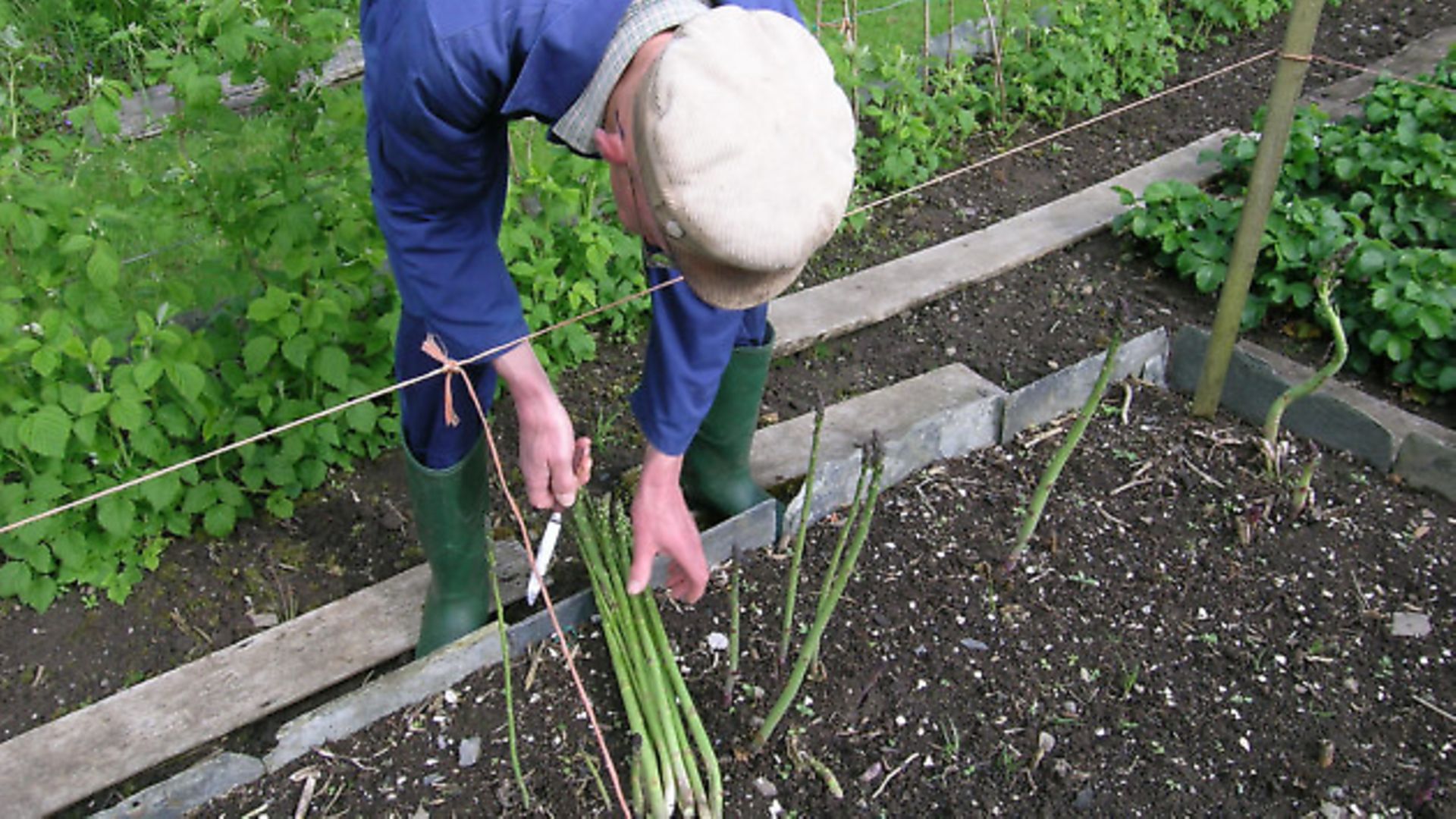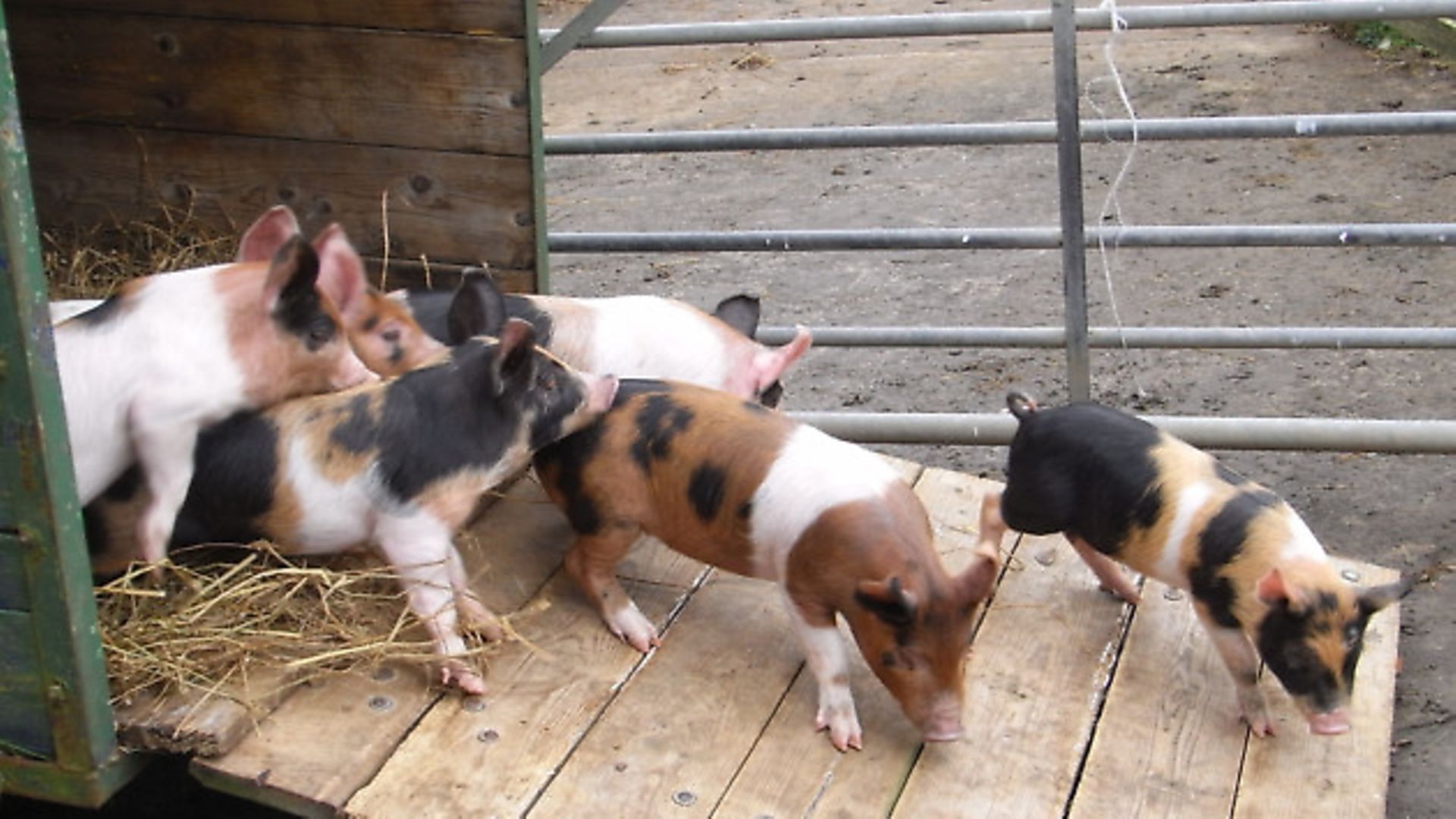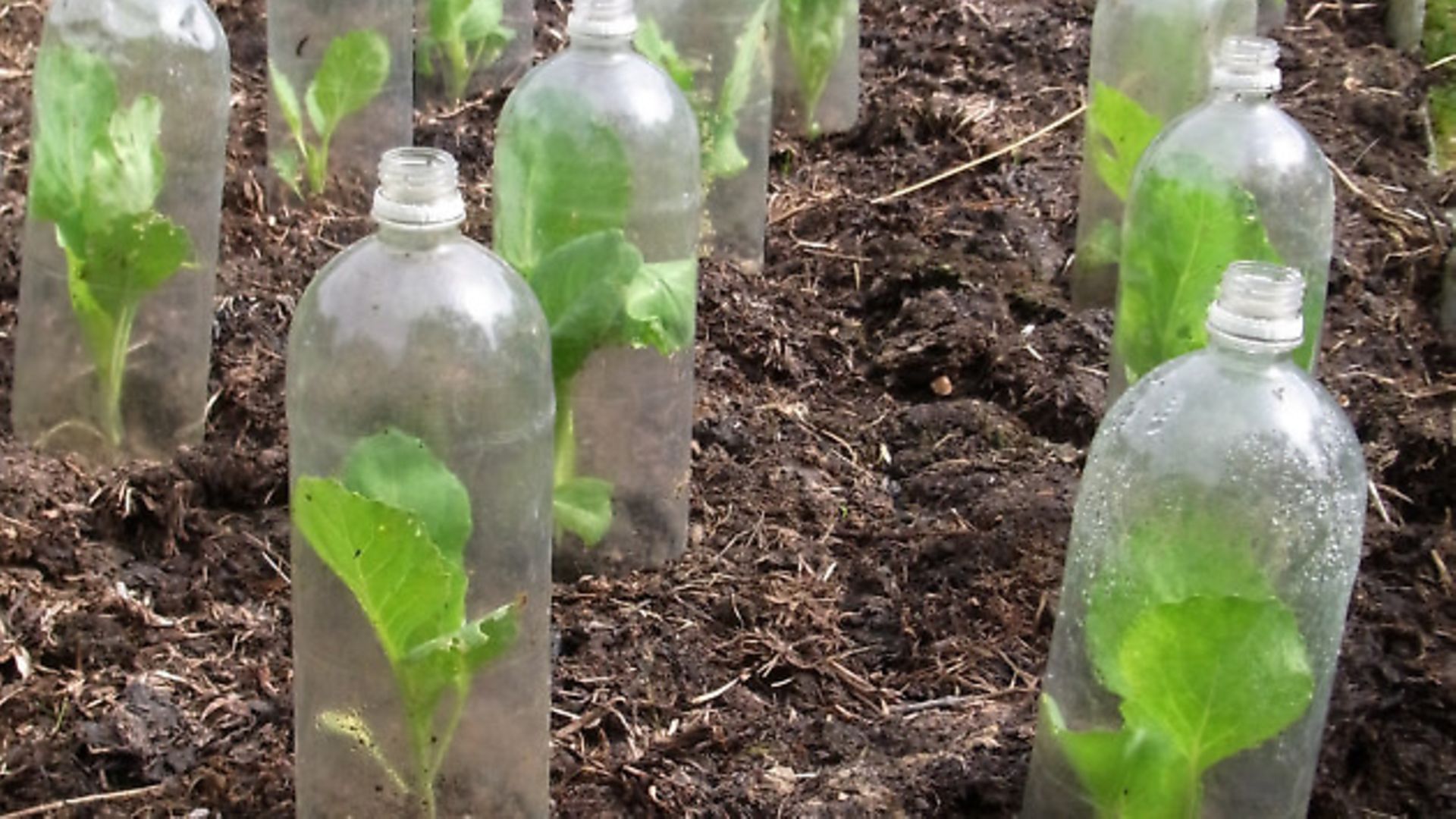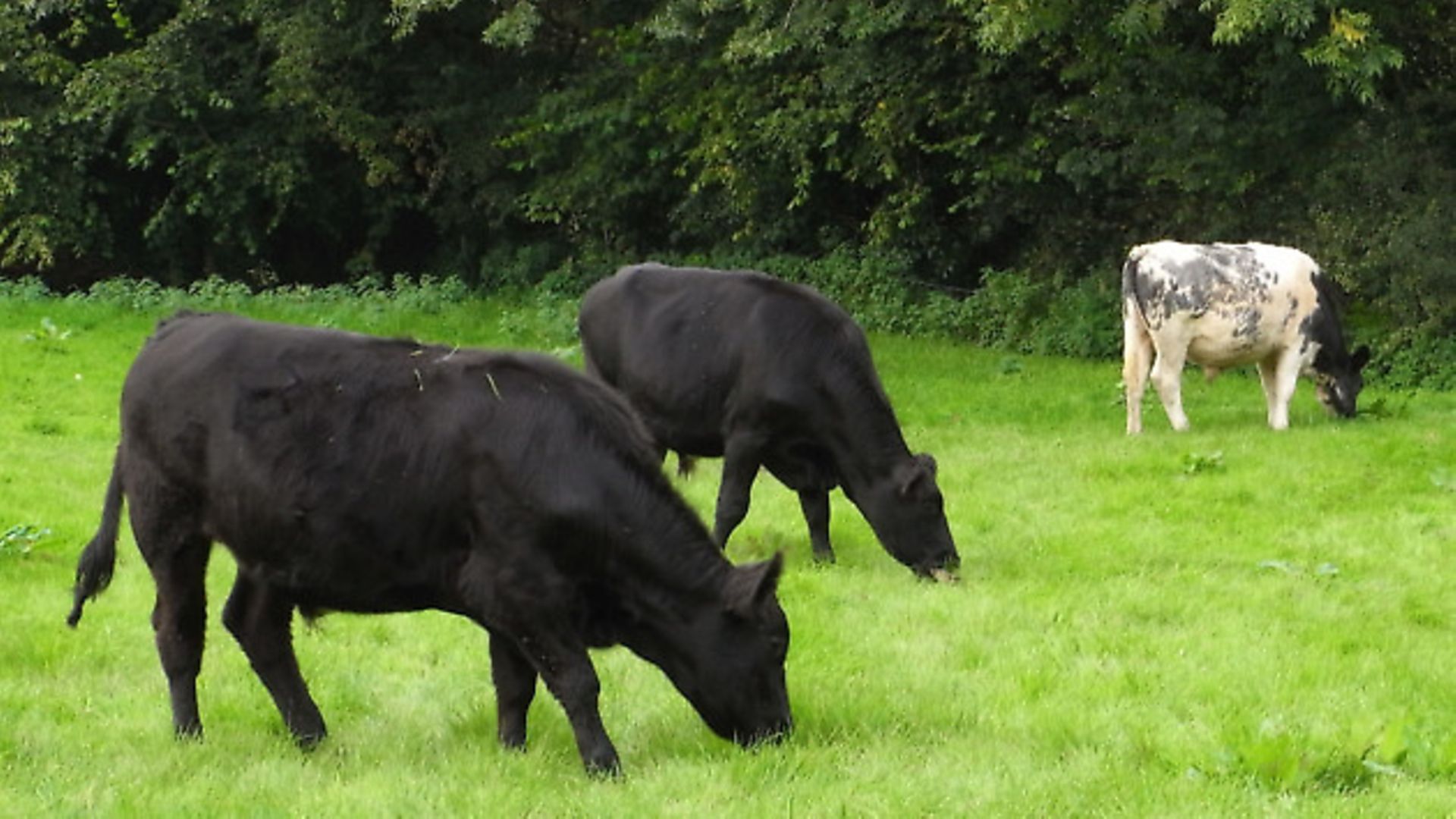The rising tide of spring brings new life and fresh produce to the smallholding, in Alan Beat’s latest instalment of his Smallholder’s Year

The garden

If April was a busy time in the vegetable garden, May brings no respite! Many crops are already planted but the frost-tender ones require protection from fleece or cloches, or just have to wait until the risk of frost has passed.

Young brassicas sown in a seedbed in March are now sturdy young plants with six or eight leaves, ready for moving to their growing positions. Using a bulb planter to cut the hole, I transplant these straight through the surface mulch, so that the root ball reaches into the soil beneath. Nip off the seed leaves and plant them deeper to the base of the first true leaves, to encourage the firm rooting that all brassicas demand. Cover each young plant with a plastic bottle cloche, pour a little water through the top to settle the roots of the transplant, and label each variety along the bed to avoid confusion later on.

Weeds are a fact of life in any productive vegetable garden. The act of growing and harvesting crops on a regular basis disturbs the ground to provide opportunities for the seed bank in the soil to germinate, and for fresh seed drifting in from outside to find a foothold. I try to minimise this by gardening in a way that employs a minimum of digging, and instead uses surface mulches both to feed the soil and to suppress weeds; but inevitably some weeds do still appear.
A warm and sunny day provides a perfect opportunity to work over the vegetable garden with the hoe. This is very much faster than hand weeding, and almost as effective when conditions are right. The effect of hoeing is to uproot young weed seedlings and expose them on the surface of the soil, where they soon wither and die.
Larger weeds that have been allowed to establish a firm root hold are cut through just below soil level, parting the green leaves from the roots to kill most species. Those with deep taproots, such as dandelions, will send up fresh leaves but are weakened each time they are cut, and will eventually give up the struggle. I try to hoe regularly for this reason, and also to prevent any seeding of fast growing annuals, bearing in mind the old adage ‘one years seeds brings seven years weeds’.
But there is another factor at work: on bare ground, regular hoeing produces a layer of fine dry soil that both inhibits the germination of weed seeds, and also acts as a kind of surface mulch, helping to conserve moisture beneath and thereby promoting the growth of crops that already have their roots established. The old-timers knew what they were doing when they kept the hoe working all through the growing season.
Asparagus
Now is the time when forward planning and patience is rewarded by the regular cutting of tender young asparagus spears. Lasting around six weeks to mid-June, the asparagus harvest helps fill the ‘hungry gap’ of spring with its luxurious taste and texture. If you don’t have an asparagus bed, resolve to plant one next winter and be prepared to wait for two more years . . . . you’ll be glad you did!
Watering
It’s unusual for me to do any watering in the vegetable garden. Here in the valley bottom the water table lies only 18 inches below the surface, so deep rooting plants can find all they need for themselves, while surface mulches help to conserve moisture in the upper layers of the soil; and of course regular showers of rain are not uncommon in Devon!
However, an unusually dry spring can persuade me to water seedlings and transplants that are struggling to establish themselves in a parched garden. For this I prefer rainwater, which is collected from the guttering of our outbuildings. Water butts should be covered, otherwise they become full of algae and mosquito larvae. I’ve raised ours off the ground, with a tap fitted at a convenient height for a bucket or watering can to stand beneath whilst filling.
I doubt that a daily light sprinkling to damp the soil surface does much good, whereas a thorough soaking every few days can penetrate deeper into the ground where it is most needed.
Table chicken
In early May, I buy in a batch of 20 day-old chicks to fatten for the table. These are hybrids bred for commercial meat production. I start them off under a heat lamp within a rat-proof wire enclosure, providing starter crumbs and water ad lib. As they grow the heat lamp is gradually raised, then switched off by day, until finally removed when the young birds are around three weeks old. They are given progressively more space as they grow, including an outside pen where grass clippings and other greens are fed on a daily basis.
Weaners
It’s also time to collect the five or six weaners that were located and ordered last month. These should now be eight or nine weeks old, weighing 30 to 35 pounds, and weaned by removing the sow to leave the piglets behind in familiar surroundings for a few days. Collection and transport to our smallholding is potentially stressful so the process is handled gently.
On arrival the weaners are released into prepared accommodation and disturbed as little as possible thereafter. I like to divide their daily ration and feed three times a day at first. They should quickly settle into the new routine and learn to accept my presence among them. After a week or so, the midday feed is dropped and half rations are fed morning and evening, progressively increasing the ration as the young pigs grow.
It can be difficult to introduce piglets from a different litter into an established group, but by collecting all weaners on the same day, I find that problems are avoided. The change in circumstances puts them on an equal footing and they quickly settle in together.
Cattle
As the ground firms up in late April or early May, my farming neighbour sends over a small number of beef cattle to spend the summer season here. These play a key role in our grassland management by grazing one half of the smallholding while our sheep flock grazes the rest. Next year, they swap over to graze the opposite half, so that our sheep always follow onto land grazed by cattle the previous year. This provides them with clean grazing, minimising use of chemical wormers.
The cattle also graze one small field exclusively as part of its management to encourage wetland flowers and the creatures that depend on them. In addition, fencing to restrict drinking access leads the cattle to poach selected areas of pond margins, clearing vegetation to create the bare mud banks favoured by some invertebrates.
Sheep
Lambs are growing fast as the full flush of spring grass kicks in. We try to look at the flock at least three times daily, checking for potential problems – and as the days grow warmer, there’s an increasing risk that a ewe might become stuck on her back. The fleece is approaching one full years growth and consequently is at its thickest and heaviest. On a sunny day, the wool heats up along the back and the ewe rolls over to scratch, only to find that she cannot right herself afterwards as the bulky fleece compresses and flattens under her own bodyweight. Crows or magpies can be quick to move in and peck the helpless animal, going for areas of bare skin or the eyes.
Frequent checks are the best defence until shearing removes the threat for another year.
Image(s) provided by:
Archant







